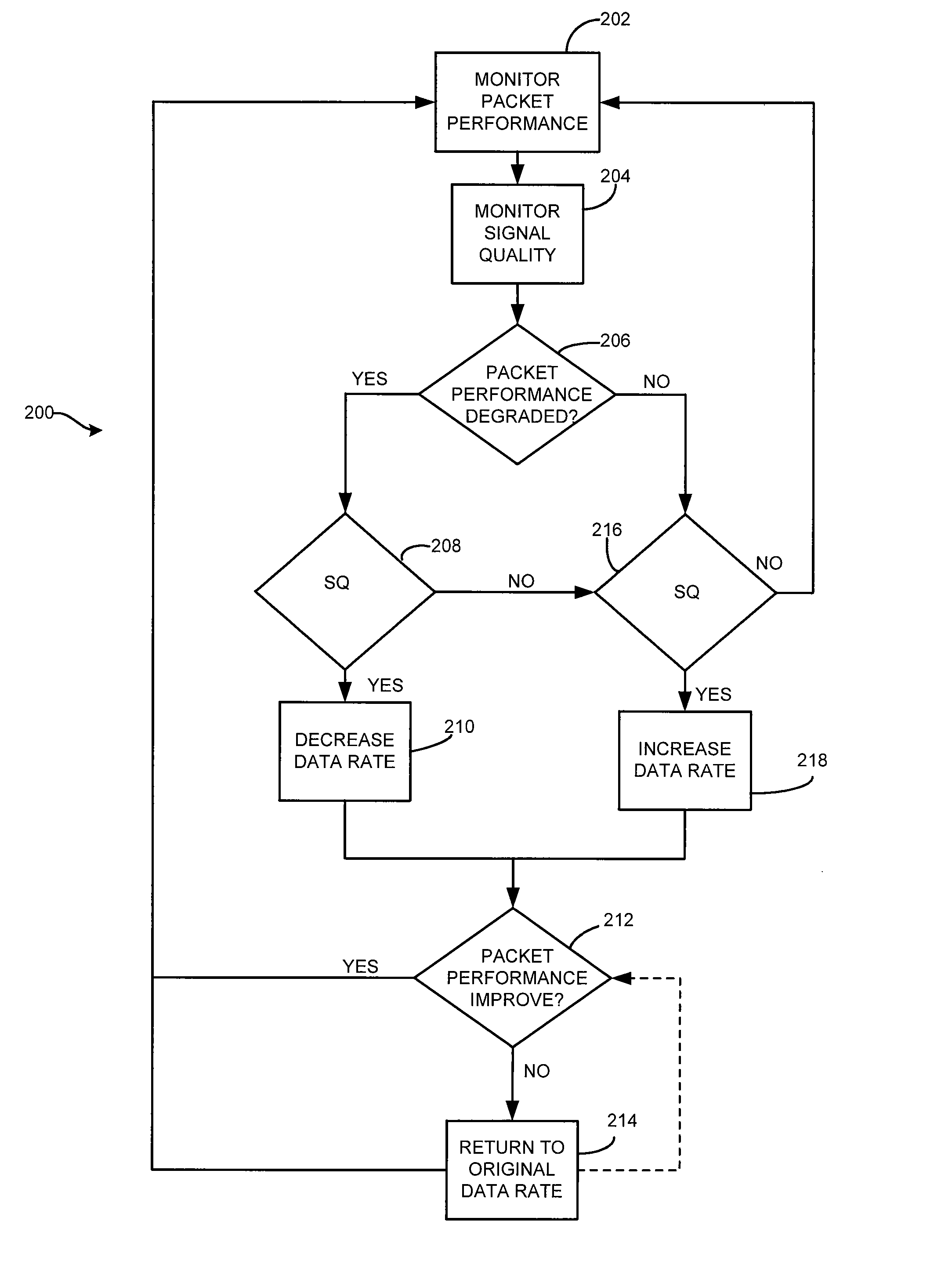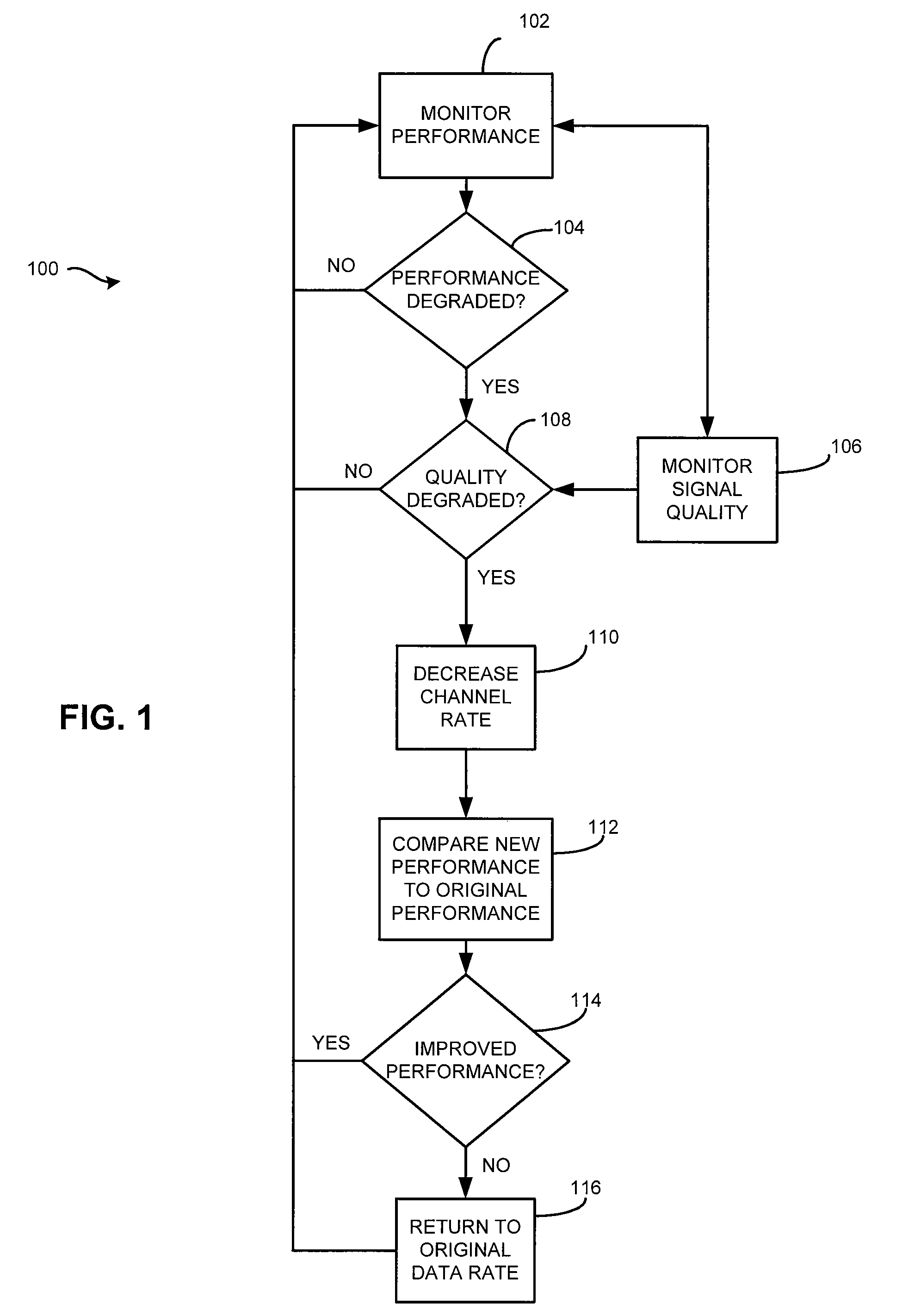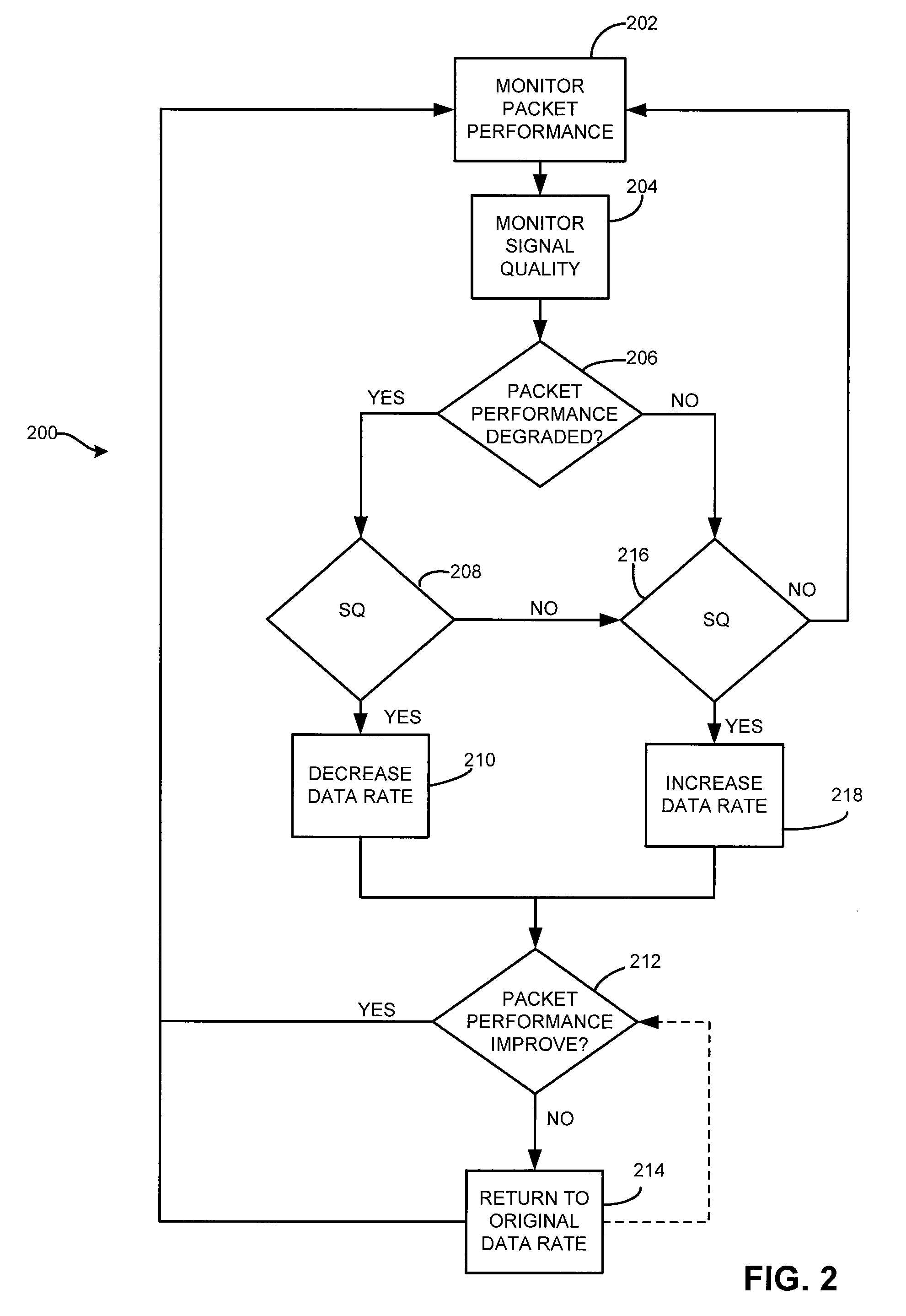Data rate shifting methods and techniques
a data rate and rate shifting technology, applied in the field of communication, can solve the problems of packet loss due to collisions, packets to become corrupted, and difficult to operate the link at higher data rates, and achieve the effect of reducing throughpu
- Summary
- Abstract
- Description
- Claims
- Application Information
AI Technical Summary
Benefits of technology
Problems solved by technology
Method used
Image
Examples
Embodiment Construction
[0017]Throughout this description, the preferred embodiment and examples shown should be considered as exemplars, rather than limitations, of the present invention. The present invention a rate shifting technique that determines the reason for packet loss. In accordance with an aspect of the present invention, the present invention can differentiate whether packet loss is caused by poor signal quality or by packet collisions.
[0018]In accordance with an aspect of the present invention there is described herein a rate shifting algorithm employing at least one of signal strength, channel quality, packet loss rate and throughput to differentiate between packet loss due to packet collisions and packet loss due to poor signal quality.
[0019]In accordance with an aspect of the present invention, there is described herein a method for rate shifting. A transceiver can keep a history of the channel quality and the received signal strength of each successfully received packet and the number of ...
PUM
 Login to View More
Login to View More Abstract
Description
Claims
Application Information
 Login to View More
Login to View More - R&D
- Intellectual Property
- Life Sciences
- Materials
- Tech Scout
- Unparalleled Data Quality
- Higher Quality Content
- 60% Fewer Hallucinations
Browse by: Latest US Patents, China's latest patents, Technical Efficacy Thesaurus, Application Domain, Technology Topic, Popular Technical Reports.
© 2025 PatSnap. All rights reserved.Legal|Privacy policy|Modern Slavery Act Transparency Statement|Sitemap|About US| Contact US: help@patsnap.com



